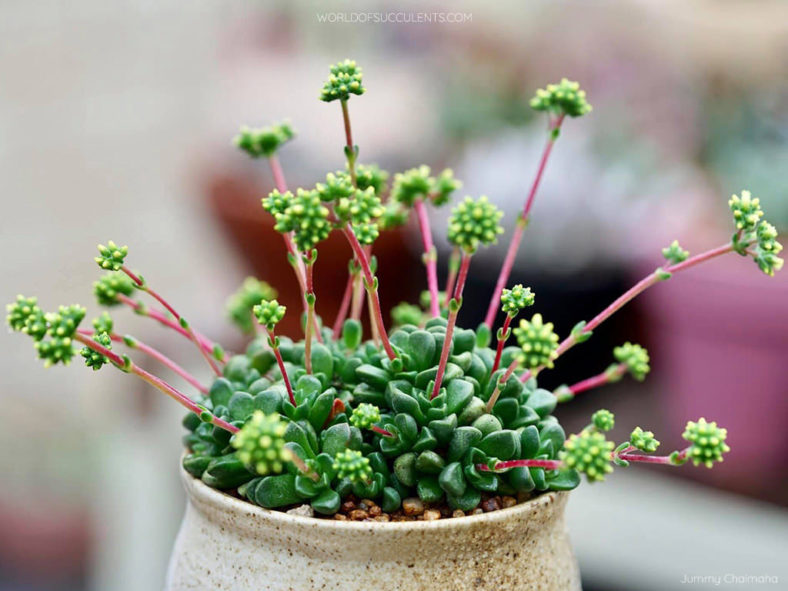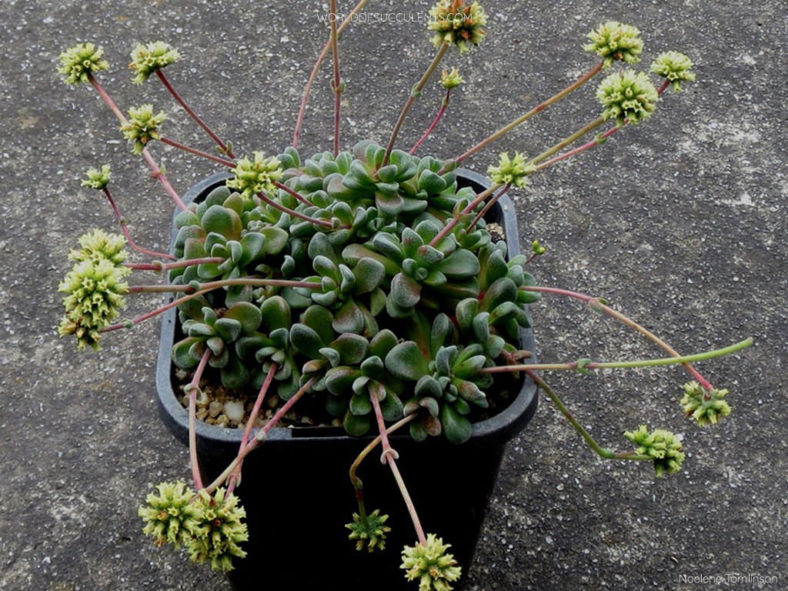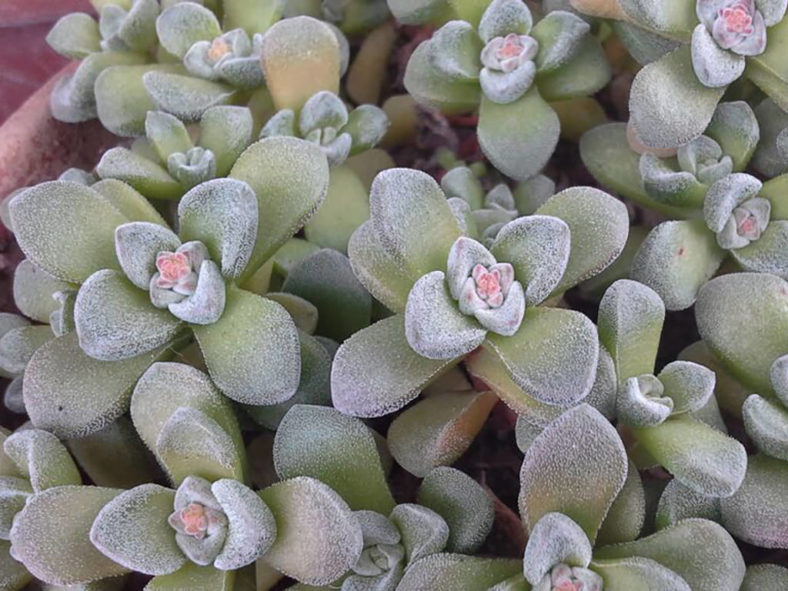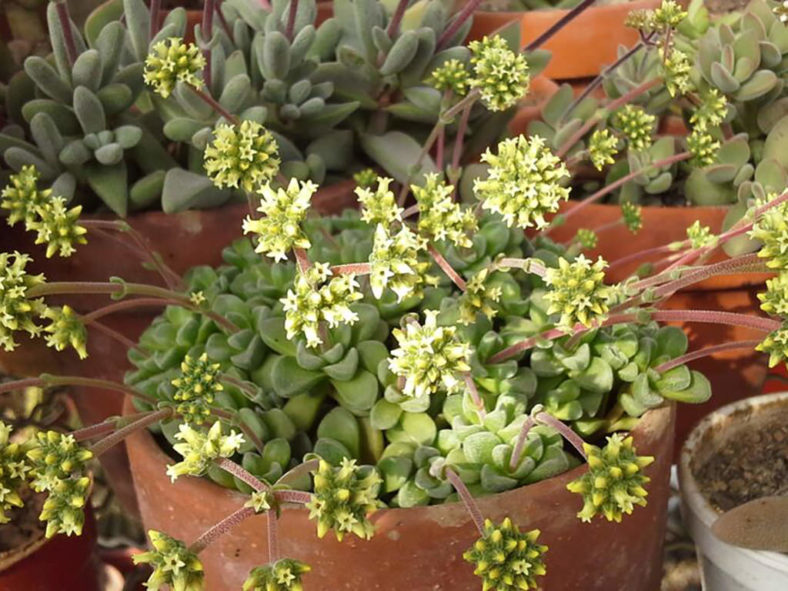Scientific Name
Crassula 'Fernwood'
Scientific Classification
Family: Crassulaceae
Subfamily: Crassuloideae
Genus: Crassula
Origin
This succulent is a hybrid by Rogers Weld, raised for Fernwood Nursery in California and named by him in 1981. It results from a cross between Crassula namaquensis subsp. comptonii and Crassula susannae.
Description
Crassula 'Fernwood' is a small, compact succulent that forms semi-tight circular rosettes of light gray-green, densely papillose leaves with a touch of purple. The rosettes readily produce offsets at the base, forming a small clump with age. The leaves are thick, fleshy, triangular, and slightly concave. Dryness and more light will intensify the purple color of the leaves.
The white flowers appear arranged in a dense, headlike cluster on slender reddish-purple peduncles in winter. In dry growing conditions, the inflorescence may be sessile or nearly so. The characteristic feature of this hybrid is the quite yellow flower buds that become white when open.

How to Grow and Care for Crassula 'Fernwood'
Light: C. 'Fernwood' prefers full sun to partial shade. However, intense afternoon sun in the hottest period of summer can burn the leaves of the plant. Therefore, a place with morning sun and afternoon shade would be perfect. Indoors, place your plant in a window that receives at least 6 hours of direct sunlight.
Soil: This plant is not particular about soil pH but requires very porous soil with excellent drainage. Use commercial potting soil mixes designated for succulents, or mix your own.
Temperature: Like most Crassulas, this succulent will tolerate short-term freezing, but extremes of cold or heat will cause it to lose leaves and die. C. 'Fernwood' can withstand temperatures as low as 25 °F (-3.9 °C). USDA Plant Hardiness Zones 9b to 11b, 25 to 50 °F (-3.9 to 10 °C).
Watering: Avoid overwatering using the "soak and dry" method, where the soil is soaked with water, slowly drained, and left to dry out before watering again. Reduce watering in winter. Potted plants require more frequent watering than those in the ground.
Fertilizing: C. 'Fernwood' does not need much feeding but will benefit from a small amount of organic fertilizer in mid-spring when it starts actively growing.
Repotting: Repot as needed, preferably in spring, at the beginning of the active growth period. Make sure the soil is dry before you begin repotting.
Propagation: This succulent is generally started by leaves or stem cuttings. It can also be grown from seeds and offsets. The easiest way is to propagate C. 'Fernwood' from a single leaf. Using stem cuttings is the fastest way to get a decent-sized plant. These processes are most successful at the beginning of the plant's active growth period. Sow the seeds in the spring or summer. Propagating by dividing offsets is easy because the parent plant has already done most of the work for you.
Learn more at How to Grow and Care for Crassula.
Toxicity of Crassula 'Fernwood'
C. 'Fernwood' is nontoxic to people and pets.
Links
- Back to genus Crassula
- Succupedia: Browse succulents by Scientific Name, Common Name, Genus, Family, USDA Hardiness Zone, Origin, or cacti by Genus
Photo Gallery
Click on a photo to see a larger version.


